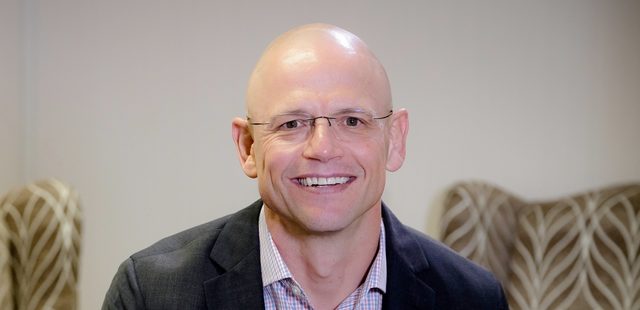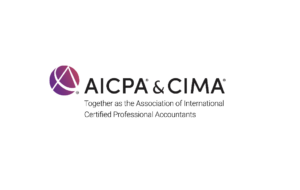Sibanye-Stillwater is concluding its all-share bid for Lonmin. Charl is navigating the challenges.
Sibanye-Stillwater CFO Charl Keyter will reach a significant milestone next year; he will be celebrating his 25-year anniversary of working for the precious metal miner. The energetic and affable Charl reflects on the highs and lows that have encompassed his impressive career. “I love my job. If I do it for the next 15 years, I can walk away saying that I really enjoyed it and I think I operated at my potential.”
It wouldn’t be far-fetched to consider Charl Keyter, the CFO of precious metal miner Sibanye-Stillwater, as a guardian of company history.
Having been with the company for 24 years over its various incarnations, Charl brings valuable institutional memory that few CFOs in the mining industry have. He has seen Sibanye-Stillwater being formed out of three unwanted gold mines spun off from South African producer Gold Fields to become a major force in the precious metals market today.
Bearing testimony to his many years of experience is that Charl seems to have perfect recall during a CFO South Africa interview, easily recalling the price of palladium two years ago as if he looked it up hours ago (he correctly ascribes a value about $700 per ounce). And he can easily tell you features of the commodities price boom in the 2000s – a period that saw mining companies record super profits on the back of high precious metal prices and global demand.
Charl doesn’t come across as a gung-ho number cruncher who is boastful. Instead, his is jovial and warm character lends itself to humblebrag moments. “I have now been with Sibanye-Stillwater for 24 years. If all goes well, I will qualify for a long-service award next year,” he says in jest.
Even before Charl reaches his 25-year anniversary at Sibanye-Stillwater, he would have presided over another milestone for the company.
Sibanye-Stillwater is in the throes of concluding one of its boldest acquisitions yet; an all-share bid worth R5.4 billion for Lonmin, London-listed and the world’s number-three platinum miner.
[cfocoza-cta slug=finance-indaba-africa-14-15-october-2020]
If the deal is successfully concluded, it will the sixth that Charl has been involved in at Sibanye-Stillwater. Previous deals include, among others, Sibanye-Stillwater’s first foray into the platinum sector in April 2016 when it acquired Aquarius Platinum for R4 billion and Rustenburg platinum mines from Anglo American Platinum six months later for R4.5 billion. He will probably be involved in another deal that will entrench Sibanye-Stillwater’s position globally; the potential move of the company’s primary listing offshore from South Africa’s JSE. Known in banking circles as “the deal”, Sibanye-Stillwater CEO Neal Froneman recently announced, according to Business Day, that the company might move its listing in the next two years – a move that would allow it to raise capital and compete for international assets.
Arguably, Neal’s possible plans cannot be viewed as a disinvestment strategy from South Africa, as Sibanye-Stillwater wants to remain domiciled in the country, where it has platinum group metals operations that contributed 34 percent to its group profits in 2018.
In the Lonmin deal, which will have considerable significance for Sibanye-Stillwater, the company will become the largest primary producer of platinum and second-largest primary producer of palladium and rhodium in the world. Sibanye-Stillwater is betting that it can restructure Lonmin, which is facing financial difficulties, by using its smelters and refineries to process, market and sell the ore it digs out of the ground to global counterparties.
But the deal has faced several challenges. Although it has received conditional approval from the Competition Tribunal to go ahead, its conclusion has stalled because of an appeal to the approval by the Association of Mineworkers and Construction Union (Amcu), the majority union at Lonmin. Amcu is vexed by potential job losses that might result from the merger, with Lonmin planning to cut 12,459 jobs (regardless of the deal) while Sibanye-Stillwater has pencilled in 885 job losses.
My toughest moments
Despite these teething problems, Charl is up for the challenge of concluding the deal, initially announced in December 2017, by June 2019. “I like to challenge myself and I have a competitive side to see through a tough situation,” he says.
After all, he is no newbie to challenges relating to structuring the merger of large entities, thanks to his previous experience that will make it easier for him to navigate complexities associated with the Lonmin deal.
Charl regards the R30 billion cash purchase of US palladium and platinum miner Stillwater by Sibanye (later becoming Sibanye-Stillwater) in 2016 as his toughest yet.
“For me it was the first time doing a rights offer, going to the market and raising public bonds and a convertible bond to fund a deal. It was a very steep learning curve,” he says.
“The integration of Stillwater into Sibanye given an eight-hour time zone difference was tough as it was a publicly run company. The challenge was about how do we integrate our processes into Stillwater in a non-disruptive manner. In South Africa, you can go to someone and say this is how we are going to do things. Meanwhile, in the US, it is very different. It is more collaborative and engaging. I have probably learned more in the past six years than in the preceding 18 years.”
Along with having to conclude the Stillwater deal, which introduced large debt in Sibanye that had to be restructured, he also had to navigate a series of stressful events that threatened the company’s profitability. Charl is part of a management team that managed operations at a time when the platinum price continues to be depressed (slumping 30 percent in the past five years) and labour disputes that have intensified at Sibanye-Stillwater mines over the demand for higher wages.
But an issue that hits him the hardest is mine deaths.
The year 2018 started off with 1,000 miners being trapped at Sibanye-Stillwater’s Beatrix Mine in Welkom for two nights following a power cut. All miners were rescued. But by June 2018, the death toll at various Sibanye-Stillwater’s operations stood at more than 20 – close to half of the fatalities in the entire mining industry.
“It is tragic when one of the employees dies. I lost my mother at a young age. And when something like that happens, I always think about the children, spouses and parents left behind. The impact that has on families is large. I don’t think you will find anybody working in the mining industry that can even put a positive spin on mine deaths.”
Over and above the emotional impact, mine deaths have a financial impact on a mining company as its operations have to be stopped until safety standards have been improved. But they also spark the ire of trade unions and the government. Charl says Sibanye-Stillwater has reinforced safety initiatives at its mines, which has seen the company return to its pre-2018 levels when it was recognised as one of the safest producers.
As of March 6, Sibanye-Stillwater has achieved seven million fatality-free shifts, which Charl says is industry leading. The best he has seen is the 3.5 million fatality-free shifts achieved at Driefontein Mine, a gold mine situated near Carletonville. “We believe the next phase of safety will involve a collaborative approach between the government, labour, and management. It is not just an initiative that should be taken by mining management.”
In moments of adversity, Charl is willing to roll up his sleeves.
He describes himself as a “hands-on person when the situation dictates” – a leadership style he subscribes to when having to structure a suite of financial instruments to fund a deal, managing wage expectations of trade unions or facing backlash over a mine fatality.
In a high-pressure job like his, when the CFO function has evolved beyond steering a company towards solvency to a support function for making strategic decisions, Charl usually spends time with family as part of his downtime.
Although he has “a high-stress tolerance” he is strict about weekends being dedicated to family time. “I am a dedicated family man. I have two sons, 11 and 15 years, and a wonderful wife that supports me. Without them, this job would have been very difficult.”
Charl is a CrossFit fanatic, training Mondays to Fridays for at least an hour, which provides him “a lot of stress relief.” He enjoys participating in fitness competitions that involve a series of obstacle races of varying distance and difficulty with his family.
“We recently did the Erg Ultra competition as a family, where we had to do three challenges; 50km on the skiing machine, 100km rowing, and 200km on the bike. We started at 3am on a Saturday morning and we finished at 10pm. Most of your rest during the 19-hour endurance event is about eight minutes. I have a competitive side, which I do find an outlet for in competitions.”
Looking back
Reflecting on his career, Charl attributes his rise to various roles at Sibanye-Stillwater to hard work, dedication, and passion for the accounting profession.
Born in Namibia’s capital of Windhoek in 1973 but later raised in Kempton Park, Gauteng’s airport town, Charl wasn’t exposed to an environment of accounting or professionals in the industry. However, he was exposed to the mining industry as his father’s cousin worked as a human resources manager at Gold Fields-owned Libanon Mine, an old gold mine based in Gauteng’s Westonaria.
“I remember in those days visiting him and his family, and how fantastic the feeling of a mining town was. Seeing the activities of a mining town and its cleanliness was fantastic. If I looked at how Gold Fields took care of its employees, the activities and cleanliness of Westonaria, I think it did play a role and influenced my career decision.”
But it would be seminars on choosing a career that Charl attended during high school that cemented his decision to study accounting over his second choice of engineering. The broad nature of the accounting profession and the multitude of career opportunities that the industry affords piqued his interest.
It would be the same Gold Fields that Charl admired for the role it played in mining towns that sponsored his bachelor’s degree in accounting studies at Rand Afrikaans University (now the University of Johannesburg). “This would be the start of my life long association with the company. I have never worked for another company. It’s the same company with a different name [Sibanye was spun off from Gold Fields].”
In 1995, he started working for Gold Fields as a trainee accountant for Libanon Mine and in the past 24 years, he has held various roles including senior manager finance and vice president and group head of international finance.
When it comes to succession planning, CFOs are usually next in line to take on the role of CEO. Asked by CFO South Africa about his career ambitions, Charl is quick to rule out prospects of becoming a CEO soon.
“Would I like to be a CEO? Maybe in the long-term. But for me, I am a family man and it is about seeing my children complete their education before I take a step like that. The pressure and demands of a CEO just from a travel perspective is double than what I currently have. I want to be there for my children and my wife as much as possible. I love my job. If I do it for the next 15 years, I can walk away saying that I really enjoyed it and I think I operated at my potential.”
This article was originally published in CFO Magazine, available to CFOs and in airport lounges now.










